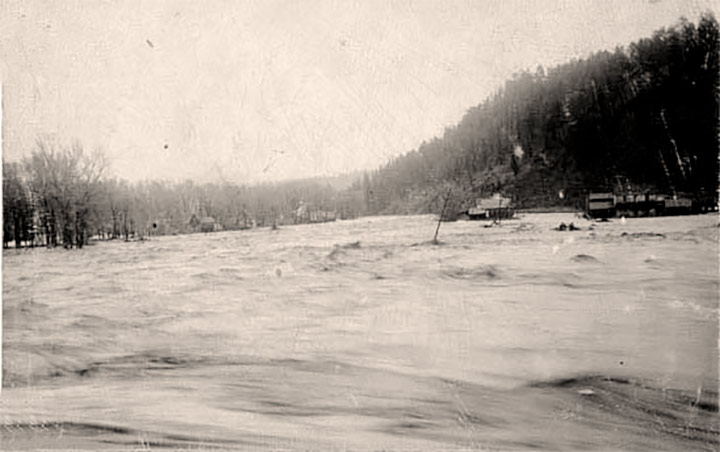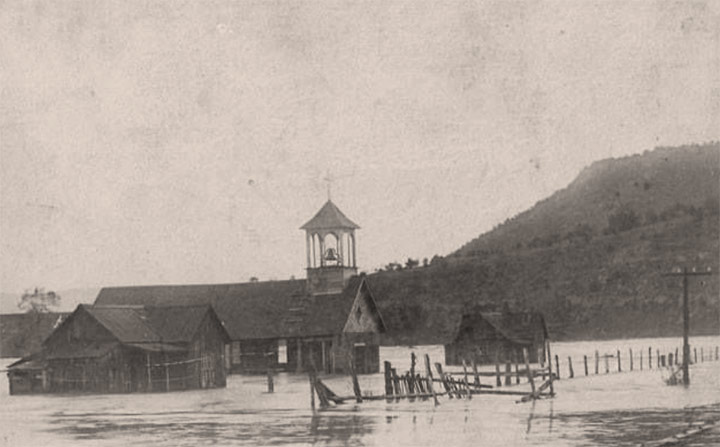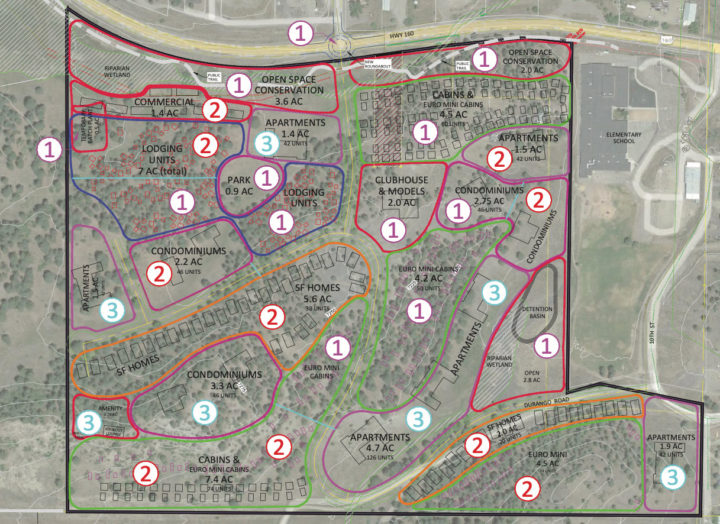PHOTO: A view of Lake Mead from the Hoover Dam.
There’s plenty to wonder about, besides water.
For example. I’m wondering, this morning, about a strange joint meeting held yesterday, between the Archuleta Board of County Commissioners and the Pagosa Springs Town Council, to discuss a proposed perpetual tax increase.
Some tax increases are for specific purposes, and ‘sunset’ after a specific period of time. The tax increase discussed yesterday evening was not only perpetual, it also had no clearly stated purpose. And the legal document that was discussed… well, the public was prohibited from seeing it, by County Attorney Todd Weaver.
More about that meeting, tomorrow.
But we can also wonder about water. Also an important topic.
I listen, occasionally, to radio station KSUT out of Ignacio, Colorado, when I want a dose of NPR-style news.
Lately, several of the bigger news stories have dealt with deadly flooding in the US, Australia, Uganda, and Pakistan.
Especially, perhaps, Pakistan… where more than 1,000 deaths have been reported due to “monster monsoons” that have swept away homes, crops and bridges during weeks of historic summer rain. Almost half a million people have been displaced, with vast areas cut off from supplies and power. Reportedly, a third of the country has been affected by the unusual weather.
Too much water… might be worse than too little water?
Pagosa Springs had an experience of too much water, in October 1911, when buildings and bridges were washed downstream by an overflowing San Juan River. Here are a couple of photos I found online that appear to portray that historic event.
This 1911 flood took place well before anyone was talking about “climate change”. But the dramatic floods in 2022 are typically described as either due to anthropogenic global warming, or made worse by it.
Of course, the biggest flood in history took place back in the time of Noah and the Ark. Reportedly.
Recently, the San Juan Water Conservancy District board has been looking into a future water shortage, with the help of consultants from the Wilson Water Group. That collaboration resulted in a 26-page report (which you can download here) that closes with eight conclusions.
One conclusion is:
Municipal demands could more than double if the pace of population growth in PAWSD’s area continues at current rates.
This is a true statement. Municipal water demand could more than double.
Or it could stay the same.
The population of Archuleta County has grown by about 27% since 2001. That’s a growth rate of about 1.3% per year. Nothing to sneeze it.
According to Pagosa Area Water & Sanitation District data (which Wilson Water Group could have reviewed, but obviously didn’t) PAWSD sold LESS treated water in 2021 (1,353 acre-feet) than they sold twenty years earlier in 2001 (1,565 acre-feet).
That is to say, we’ve had no cumulative growth in municipal water demand, during 20 years of population growth.
Disclosure: I currently serve on the Pagosa Area Water and Sanitation District (PAWSD) board of directors, but this editorial reflects only my own personal opinions, and not necessarily those the PAWSD board as a whole.
Here’s another conclusion by Wilson Water Group:
Under historical climate conditions, agricultural demands are not expected to increase and may actually decrease due to urbanization.
Daily Post readers may aware that the mainstream news media has described the past 20 years as a “mega-drought” in the American West. Readers may have also noticed that PAWSD has consistently met the community’s water needs every year, for the past 20 years. (In 2002, we were asked not to water our lawns. That was an honest mega-drought here in Pagosa, that year.)
How has PAWSD managed this? Its success is partly a result of purchasing ‘senior water rights’ when local ranches go up for sale. Ranching in Pagosa Springs has always been challenging, and according the the US Department of Agriculture (USDA) our agriculture industry here, as a whole, showed a loss of $2 million in 2017.
Is it possible that PAWSD will be able to purchase historical water rights in the future, as more ranches go out of business… and up for sale?
For whatever reason, the Wilson Water Group report did not consider that possibility.
They did, however, consider “stream restoration, fallowing, and forest health” that have the potential to improve streamflow and water supplies, and wrote, “the District should continue to monitor on-going projects to see how the results could be applicable in the Upper San Juan basin.”
As someone once said, there’s more than one way to skin a reservoir.
But the entire Wilson Water Group analysis was, in my humble opinion, based upon the idea of building a future reservoir in the Dry Gulch Valley. Their conclusion:
Reservoir sizing is dependent on the demands determined to be critical by the District. For example, a 3,000 acre-feet reservoir would meet all future municipal demand shortages (Low, Mid-Range, and High). A 10,000 acre-feet reservoir would meet future municipal and mid-range agricultural and environmental demands in all years except very dry years…
The report projected a “Mid-Range” population in the PAWSD service area of about 21,652 full-time residents, in the year 2050.
Where, exactly, these 21,652 people would live is not immediately clear. Currently, PAWSD has estimated that it serves about 10,000 people in the Pagosa Lakes and downtown Pagosa areas… plus a few outlying subdivisions.
Does anyone think we can fit 11,000 more people into Pagosa Lakes and downtown Pagosa areas… plus in a few smaller subdivisions that are mostly built out?
Some developers from Arizona and New Mexico have already caused significant controversy this year by proposing 675 new homes in downtown Pagosa — the so-called ‘Pagosa Views’ project. They estimate that it will take 10 years to fully build out, assuming it gets approved. So then, 2032. If all goes well.
Then we have the Wilson Water Group estimate of the projected 2050 ‘water demand’ for a ‘Mid-Range’ build-out. Wilson Water Group’s estimate is fairly… shall we say, optimistic? “5,481 acre-feet”.
Four times the amount of water PAWSD sold last year.
So… the population doubles? And water demand quadruples?
A lot of people are wondering about water, these days, especially out here in the American West. (Myself included, as suggested by the title of this editorial series.)
There’s a lot to wonder about.
No doubt the homeowners and industrialists and farmers and ranchers in Arizona are wondering about the future. According to recent news reports, the US Bureau of Reclamation have cut Arizona’s allotment from the Colorado River by 21%. Nevada has been cut by 8%.
Who’s next?
And will these kinds of allocation limits also end up limiting — or discouraging — population growth in the American West…?
I wonder.



